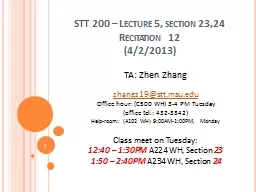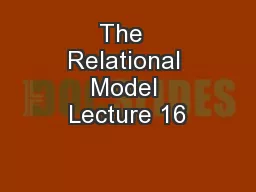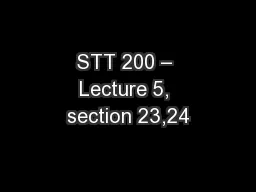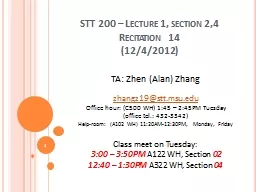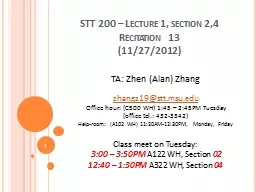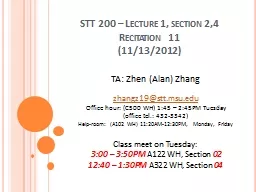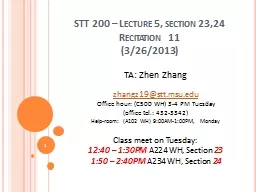PPT-STT 200 – Lecture 5, section 23,24
Author : giovanna-bartolotta | Published Date : 2016-08-15
Recitation 12 422013 TA Zhen Zhang zhangz19sttmsuedu Office hour C500 WH 34 PM Tuesday office tel 4323342 Helproom A102 WH 900AM100PM Monday Class meet on
Presentation Embed Code
Download Presentation
Download Presentation The PPT/PDF document "STT 200 – Lecture 5, section 23,24" is the property of its rightful owner. Permission is granted to download and print the materials on this website for personal, non-commercial use only, and to display it on your personal computer provided you do not modify the materials and that you retain all copyright notices contained in the materials. By downloading content from our website, you accept the terms of this agreement.
STT 200 – Lecture 5, section 23,24: Transcript
Download Rules Of Document
"STT 200 – Lecture 5, section 23,24"The content belongs to its owner. You may download and print it for personal use, without modification, and keep all copyright notices. By downloading, you agree to these terms.
Related Documents

